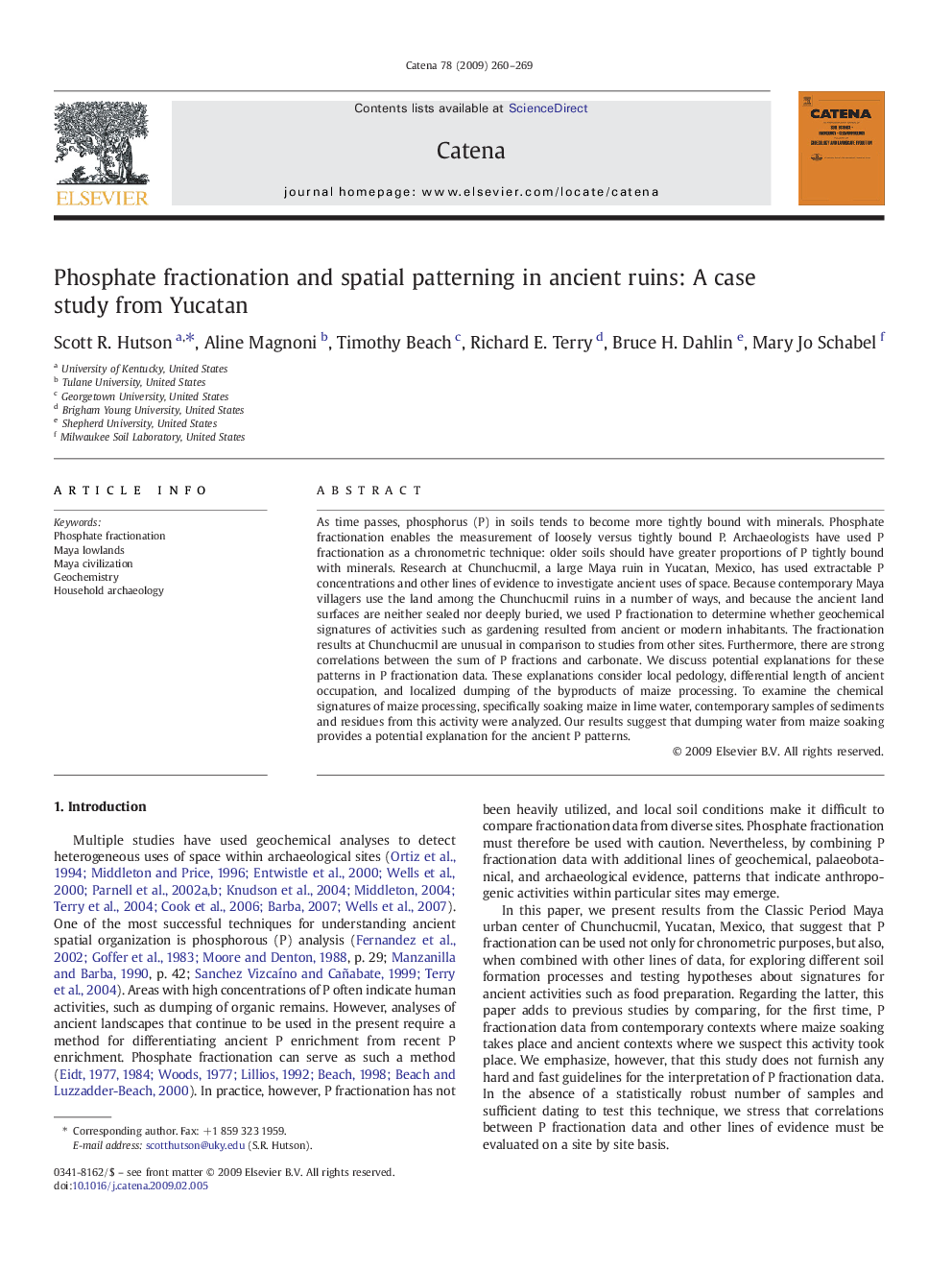| Article ID | Journal | Published Year | Pages | File Type |
|---|---|---|---|---|
| 4572191 | CATENA | 2009 | 10 Pages |
As time passes, phosphorus (P) in soils tends to become more tightly bound with minerals. Phosphate fractionation enables the measurement of loosely versus tightly bound P. Archaeologists have used P fractionation as a chronometric technique: older soils should have greater proportions of P tightly bound with minerals. Research at Chunchucmil, a large Maya ruin in Yucatan, Mexico, has used extractable P concentrations and other lines of evidence to investigate ancient uses of space. Because contemporary Maya villagers use the land among the Chunchucmil ruins in a number of ways, and because the ancient land surfaces are neither sealed nor deeply buried, we used P fractionation to determine whether geochemical signatures of activities such as gardening resulted from ancient or modern inhabitants. The fractionation results at Chunchucmil are unusual in comparison to studies from other sites. Furthermore, there are strong correlations between the sum of P fractions and carbonate. We discuss potential explanations for these patterns in P fractionation data. These explanations consider local pedology, differential length of ancient occupation, and localized dumping of the byproducts of maize processing. To examine the chemical signatures of maize processing, specifically soaking maize in lime water, contemporary samples of sediments and residues from this activity were analyzed. Our results suggest that dumping water from maize soaking provides a potential explanation for the ancient P patterns.
